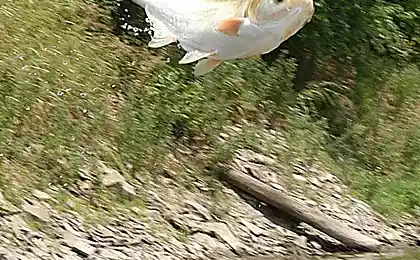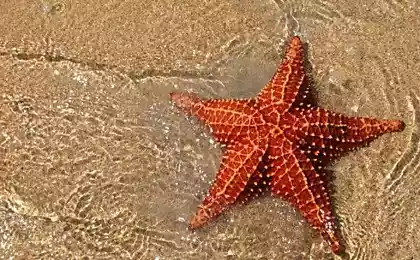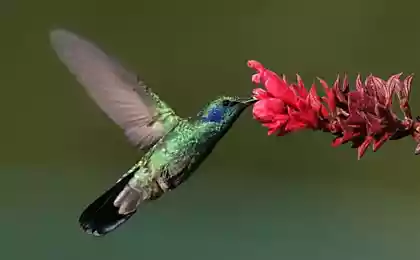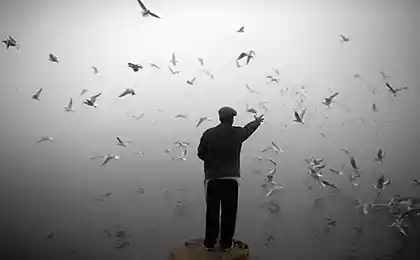450
Amazing bird species you haven’t heard of
Long-tailed velvet weaver
These South African birds got their name for their black color and very long tail, which develops in flight like a ribbon. The tail of males can reach 16 cm, which is twice the length of their body.

Brilliant painted malur As for the relationship between individuals of different sexes, they are very peculiar. Despite the fact that these birds are essentially monogamous and even form pairs, they still lead a promiscuous sexual life, mating with other individuals. At the same time, they provide assistance in the upbringing of chicks that appear as a result of such meetings. To attract the attention of females, males tear bright flower petals and show them to females.

Royal fly-eater There are 4 species of royal fly-eater and each of them has a crest resembling a fan: a kind of “crown”, which, however, can only be seen during the courtship of the female and during competition with other males.

Scaly bird of paradise They live in the forests of New Guinea. When this bird was first introduced to Europe, people thought it was fake. It is all about the unusual feathers that adorn the heads of males. These birds are solitary in nature and never pair. Thus, the upbringing of the chicks occurs without any participation on the part of the male.
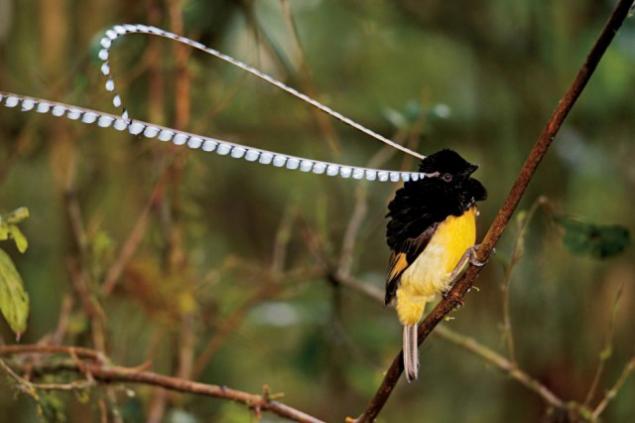
quetzal Many people think they are the most beautiful birds in the world. Quetzal is the national bird of Guatemala, and even the currency in this country bears its name. Once upon a time, the Mayans worshiped this bird, considering it sacred. Their feathers were practically priceless, and only chiefs and priests were allowed to wear them as decoration.

Lilac-breasted squirrel This bird got its name for the impressive courtship of the female in flight, during which the male, having risen to a considerable height, spinning, rushes into the water at high speed, while making loud noises. They live in savannahs and farmlands in eastern and southern Africa.

Krank-inca These stunning seabirds with mustaches make nests on the rocky coasts of Chile and Peru. Interestingly, the Inca tern, having a rather expressive appearance, is also distinguished by its singing. Birds make sounds that resemble cat meowing. These members of the ternary fish family eat. They're endangered.
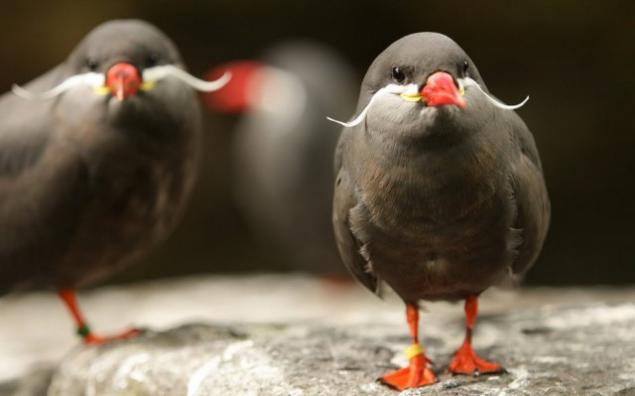
Curly Arasari This bird belongs to the toucan family and got its name from the feathers on the head. They're wrapped like ribbons on a packed gift.

Blue-headed tanagra There are three subspecies of these birds, which differ primarily in the plumage in the neck and head. They live in low-lying areas of tropical forests in eastern South America. They are usually held in pairs or groups. Their diet includes fruits, however, when fruit is not enough, they will not miss the opportunity to eat insects.
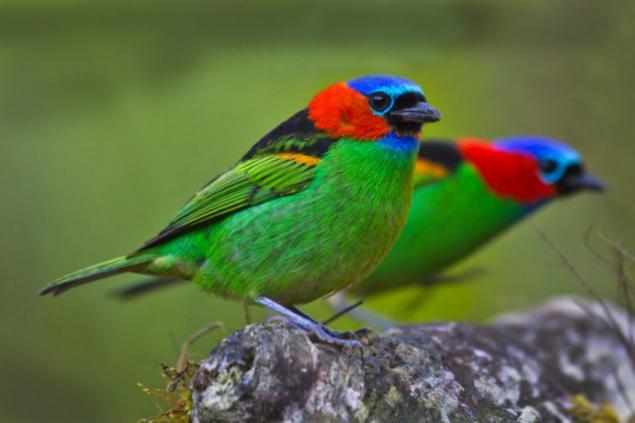
Blue-headed magnificent bird of paradise This is another magnificent bird, which can be easily recognized by the curling feathers on the tail and the unique color. The “crown” of turquoise color on the male’s head is not actually feathers, but a patch of bare skin.
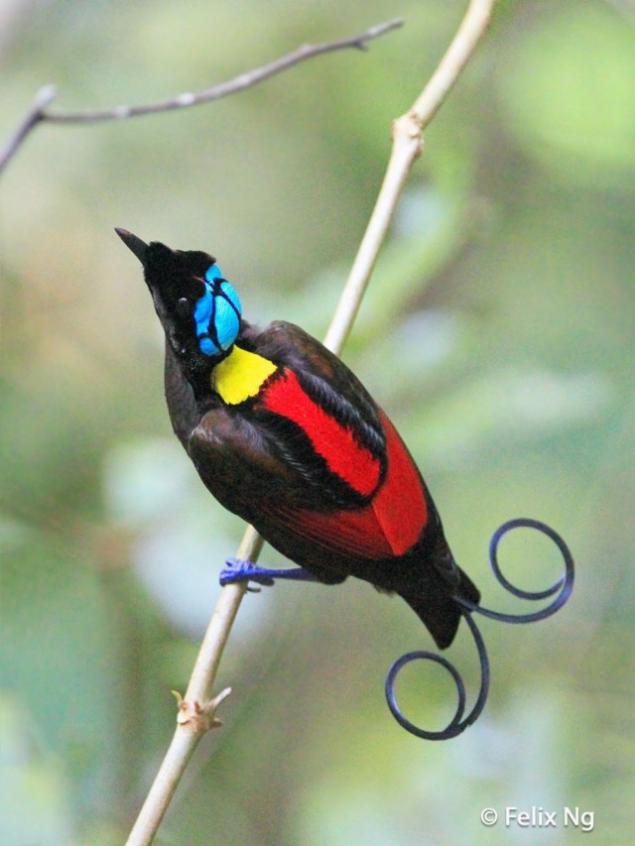
Guiana rock cockerel The wreath in the form of a semicircle on the head of these birds is formed by two rows of feathers. It remains visible at all times and does not disappear after the mating season, as is often the case with other bird species.

Lavender-headed painted malur Their singing differs from the singing of other males, because it sounds at a lower frequency, and is usually performed by a duet.

Turaco Livingston These birds belong to the Turak family, which literally means “banananods”. Despite their name, they don’t eat bananas.
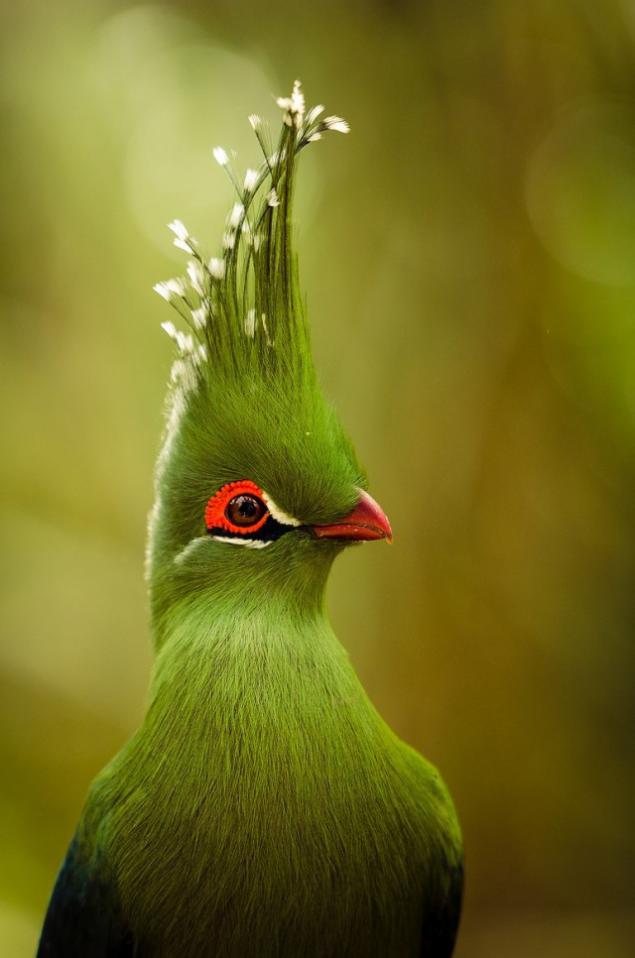
Brilliant cotinga This species of birds with a bright turquoise-blue color lives in the Amazon rainforest. They usually behave quietly unless they are disturbed by predators. But, as is usually the case in the bird world, females are less fortunate: they have a gray-brown color with dark spots.

Naked ringer The loud bell ringer lives in the Atlantic forests of South America and has one of the loudest voices.
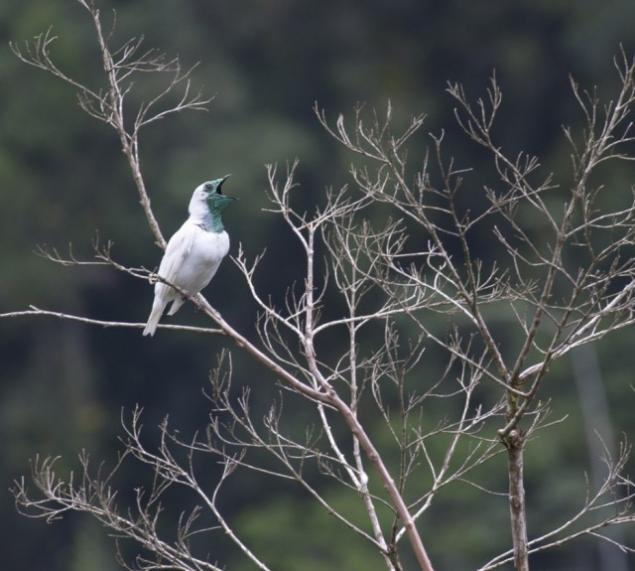
Indian rhino bird This bird is easy to recognize thanks to a kind of “helmet” on the beak. The indigenous tribes of central India believed that the skull of the rhinoceros bird brought wealth.

Collar trogon
This species can be found on the island of Borneo. They live in pairs or one by one, and nest in the hollows of trees. Interesting fact: collar trogons have a habit of sitting motionless for a long time, breaking away only to grab an insect or pick a berry. They're endangered.

Momot bluebrow There are momoths in Central America. They are not born with a racket characteristic of their family. Feathers are weakly attached to the trunk and fall as they grow older.

Malaysian blue-tailed pita It is one of three species of blue-tailed pitts that were previously classified as one species. However, they were separated due to external and vocal differences.
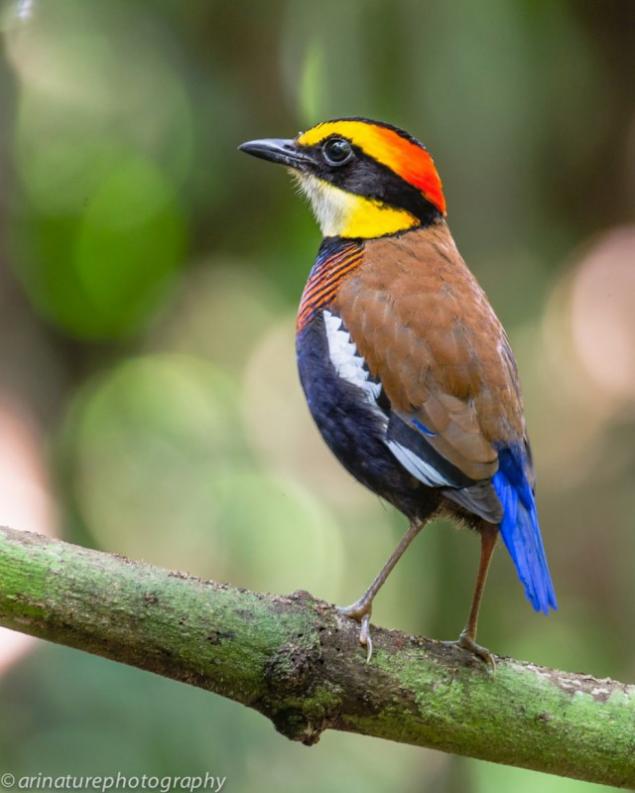
Red-beaked alcyone Alcyone nests in tunnels on the steep banks of rivers and roads, digging burrows 50 cm deep. The source of food are insects, rodents, fish, snails and even songbirds.

Little Sultan You can meet the sultan in the southeastern United States, in the central and northern parts of South America. This species of birds lives in swamps with dense vegetation.

Magnificent astrapy It is one of 41 species of bird of paradise found only in the mountains of New Guinea.
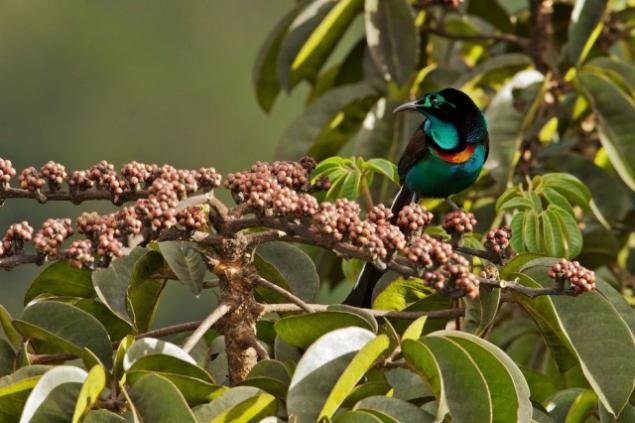
Kea. The only mountain parrots in the world can be found on the southern island of New Zealand. These large birds are known for their intelligence and curiosity.

South American quaqua You can easily recognize the South American quack by its white plumage, black cap on its head and bright blue beak. However, you can hardly hear them, as their cries are very quiet.

Threaded bird of paradise These birds live on the eastern and western shores of New Guinea and the island of Salavati, where they settle mainly in mountainous areas, live in families or flocks. To attract the female, the males dance and comb them with their 12 lateral feathers that resemble wires. They feed on the juice of flowers, such as, for example, sago palm or pisang.

Horned hummingbird Hummingbirds of this species can be found in South America. Only males have a bright “horn”, shimmering with different colors.
459318
published
P.S. And remember, just by changing our consumption – together we change the world!
Source: fun-to-mass.ru/udivitelnye-vidy-ptic-o-kotorykh-vy-da/
These South African birds got their name for their black color and very long tail, which develops in flight like a ribbon. The tail of males can reach 16 cm, which is twice the length of their body.

Brilliant painted malur As for the relationship between individuals of different sexes, they are very peculiar. Despite the fact that these birds are essentially monogamous and even form pairs, they still lead a promiscuous sexual life, mating with other individuals. At the same time, they provide assistance in the upbringing of chicks that appear as a result of such meetings. To attract the attention of females, males tear bright flower petals and show them to females.

Royal fly-eater There are 4 species of royal fly-eater and each of them has a crest resembling a fan: a kind of “crown”, which, however, can only be seen during the courtship of the female and during competition with other males.

Scaly bird of paradise They live in the forests of New Guinea. When this bird was first introduced to Europe, people thought it was fake. It is all about the unusual feathers that adorn the heads of males. These birds are solitary in nature and never pair. Thus, the upbringing of the chicks occurs without any participation on the part of the male.

quetzal Many people think they are the most beautiful birds in the world. Quetzal is the national bird of Guatemala, and even the currency in this country bears its name. Once upon a time, the Mayans worshiped this bird, considering it sacred. Their feathers were practically priceless, and only chiefs and priests were allowed to wear them as decoration.

Lilac-breasted squirrel This bird got its name for the impressive courtship of the female in flight, during which the male, having risen to a considerable height, spinning, rushes into the water at high speed, while making loud noises. They live in savannahs and farmlands in eastern and southern Africa.

Krank-inca These stunning seabirds with mustaches make nests on the rocky coasts of Chile and Peru. Interestingly, the Inca tern, having a rather expressive appearance, is also distinguished by its singing. Birds make sounds that resemble cat meowing. These members of the ternary fish family eat. They're endangered.

Curly Arasari This bird belongs to the toucan family and got its name from the feathers on the head. They're wrapped like ribbons on a packed gift.

Blue-headed tanagra There are three subspecies of these birds, which differ primarily in the plumage in the neck and head. They live in low-lying areas of tropical forests in eastern South America. They are usually held in pairs or groups. Their diet includes fruits, however, when fruit is not enough, they will not miss the opportunity to eat insects.

Blue-headed magnificent bird of paradise This is another magnificent bird, which can be easily recognized by the curling feathers on the tail and the unique color. The “crown” of turquoise color on the male’s head is not actually feathers, but a patch of bare skin.

Guiana rock cockerel The wreath in the form of a semicircle on the head of these birds is formed by two rows of feathers. It remains visible at all times and does not disappear after the mating season, as is often the case with other bird species.

Lavender-headed painted malur Their singing differs from the singing of other males, because it sounds at a lower frequency, and is usually performed by a duet.

Turaco Livingston These birds belong to the Turak family, which literally means “banananods”. Despite their name, they don’t eat bananas.

Brilliant cotinga This species of birds with a bright turquoise-blue color lives in the Amazon rainforest. They usually behave quietly unless they are disturbed by predators. But, as is usually the case in the bird world, females are less fortunate: they have a gray-brown color with dark spots.

Naked ringer The loud bell ringer lives in the Atlantic forests of South America and has one of the loudest voices.

Indian rhino bird This bird is easy to recognize thanks to a kind of “helmet” on the beak. The indigenous tribes of central India believed that the skull of the rhinoceros bird brought wealth.

Collar trogon
This species can be found on the island of Borneo. They live in pairs or one by one, and nest in the hollows of trees. Interesting fact: collar trogons have a habit of sitting motionless for a long time, breaking away only to grab an insect or pick a berry. They're endangered.

Momot bluebrow There are momoths in Central America. They are not born with a racket characteristic of their family. Feathers are weakly attached to the trunk and fall as they grow older.

Malaysian blue-tailed pita It is one of three species of blue-tailed pitts that were previously classified as one species. However, they were separated due to external and vocal differences.

Red-beaked alcyone Alcyone nests in tunnels on the steep banks of rivers and roads, digging burrows 50 cm deep. The source of food are insects, rodents, fish, snails and even songbirds.

Little Sultan You can meet the sultan in the southeastern United States, in the central and northern parts of South America. This species of birds lives in swamps with dense vegetation.

Magnificent astrapy It is one of 41 species of bird of paradise found only in the mountains of New Guinea.

Kea. The only mountain parrots in the world can be found on the southern island of New Zealand. These large birds are known for their intelligence and curiosity.

South American quaqua You can easily recognize the South American quack by its white plumage, black cap on its head and bright blue beak. However, you can hardly hear them, as their cries are very quiet.

Threaded bird of paradise These birds live on the eastern and western shores of New Guinea and the island of Salavati, where they settle mainly in mountainous areas, live in families or flocks. To attract the female, the males dance and comb them with their 12 lateral feathers that resemble wires. They feed on the juice of flowers, such as, for example, sago palm or pisang.

Horned hummingbird Hummingbirds of this species can be found in South America. Only males have a bright “horn”, shimmering with different colors.
459318
published
P.S. And remember, just by changing our consumption – together we change the world!
Source: fun-to-mass.ru/udivitelnye-vidy-ptic-o-kotorykh-vy-da/





